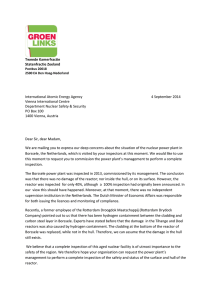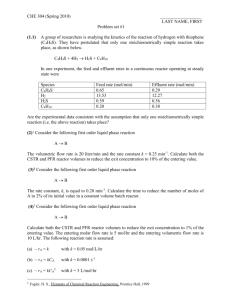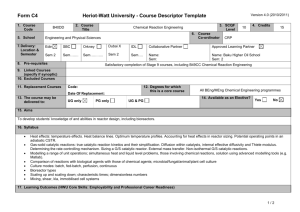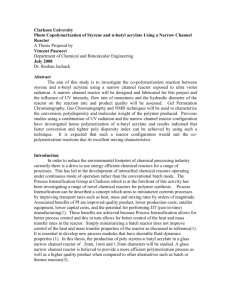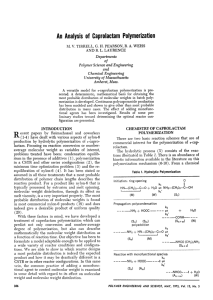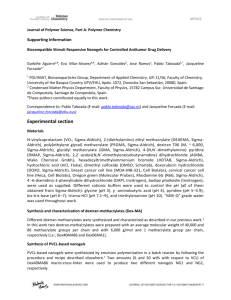pola27765-sup-0001-suppinfo
advertisement
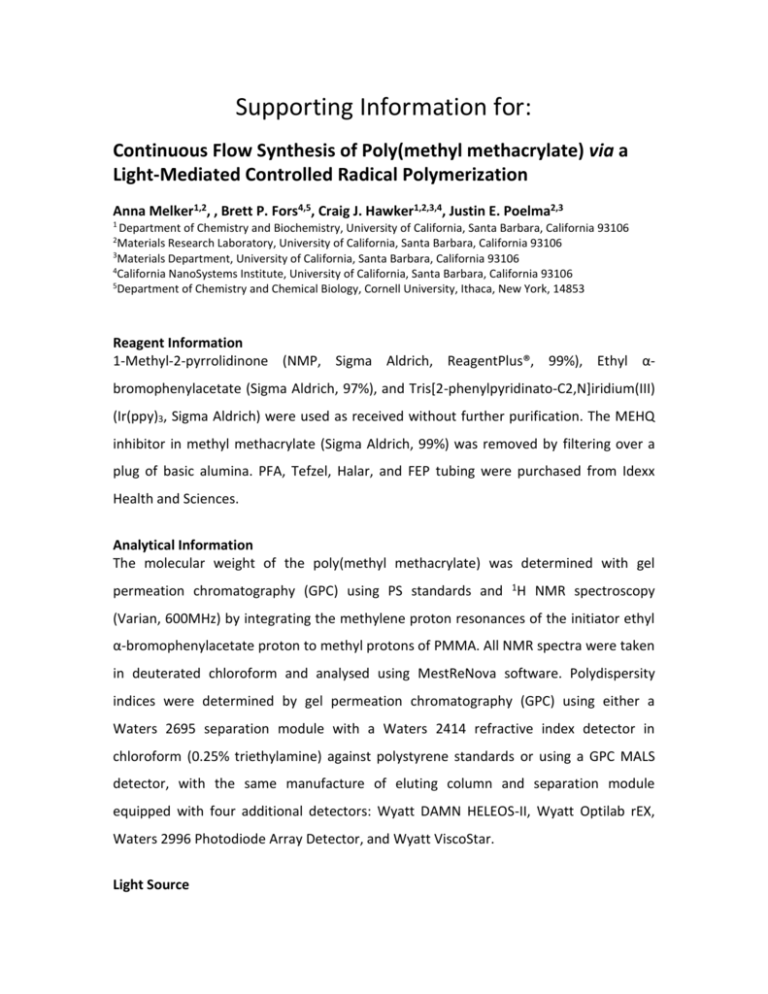
Supporting Information for: Continuous Flow Synthesis of Poly(methyl methacrylate) via a Light-Mediated Controlled Radical Polymerization Anna Melker1,2, , Brett P. Fors4,5, Craig J. Hawker1,2,3,4, Justin E. Poelma2,3 1 Department of Chemistry and Biochemistry, University of California, Santa Barbara, California 93106 Materials Research Laboratory, University of California, Santa Barbara, California 93106 3 Materials Department, University of California, Santa Barbara, California 93106 4 California NanoSystems Institute, University of California, Santa Barbara, California 93106 5 Department of Chemistry and Chemical Biology, Cornell University, Ithaca, New York, 14853 2 Reagent Information 1-Methyl-2-pyrrolidinone (NMP, Sigma Aldrich, ReagentPlus®, 99%), Ethyl αbromophenylacetate (Sigma Aldrich, 97%), and Tris[2-phenylpyridinato-C2,N]iridium(III) (Ir(ppy)3, Sigma Aldrich) were used as received without further purification. The MEHQ inhibitor in methyl methacrylate (Sigma Aldrich, 99%) was removed by filtering over a plug of basic alumina. PFA, Tefzel, Halar, and FEP tubing were purchased from Idexx Health and Sciences. Analytical Information The molecular weight of the poly(methyl methacrylate) was determined with gel permeation chromatography (GPC) using PS standards and 1H NMR spectroscopy (Varian, 600MHz) by integrating the methylene proton resonances of the initiator ethyl α-bromophenylacetate proton to methyl protons of PMMA. All NMR spectra were taken in deuterated chloroform and analysed using MestReNova software. Polydispersity indices were determined by gel permeation chromatography (GPC) using either a Waters 2695 separation module with a Waters 2414 refractive index detector in chloroform (0.25% triethylamine) against polystyrene standards or using a GPC MALS detector, with the same manufacture of eluting column and separation module equipped with four additional detectors: Wyatt DAMN HELEOS-II, Wyatt Optilab rEX, Waters 2996 Photodiode Array Detector, and Wyatt ViscoStar. Light Source All reactions were performed at room temperature in a Rayonet light box equipped with (λ = 380 nm) bulbs and a fan for cooling. When comparing polymerization kinetics of the PFA and Halar reactors, the flow reactor was also irradiated from the inside of the beaker with a strip of LEDs (λ = 380 nm), purchased from Elemental LED. The same LEDs were also used as additional radiation in the batch reactions for comparison to the Halar flow experiments. Note: 380 nm LED strips are no longer sold by elemental led, but may be bought from LEDlightinghut.com. Figure 1 SI. Pictured: 1L retrofitted beaker with tubing wrapped around the outside and LEDs (λ = 380 nm) taped to the inside. Flow reactor was suspended inside a Rayonet reactor equipped with bulbs and fan cooling. Continuous flow setup and calculations of flow rate The continuous flow reactor was assembled by wrapping 550 cm of either Halar, PFA, FEP, or Tefzel tubing (I.D. 0.02 in) around the outside of a retrofitted 1L beaker with no bottom to maximize ambient air flow cooling (Figure 1 SI). One end of the reactor was fitted to a static mixing tee and two inlet lines while the other end was attached to a collection vial. Two degassed solutions were prepared and added to separate plastic AirTite Luer Lock syringes for injection via a syringe pump (New Era Pump Systems Inc.). In a typical reaction, one solution contained 0.005 mol % (1.77 mg, 2.70310-3 mmol) of the catalyst, fac-Ir(ppy)3, in N-methylpyrrolidone (NMP) (13 mL), and the other contained a solution of monomer and initiator, methyl methacrylate (MMA) (53.9 mmol, 5.77 mL) and ethyl α-bromophenyl acetate (0.537 mmol, 94.0 μL), in 7.15 mL NMP. To avoid any oxygen contamination in the tubing, argon followed by degassed NMP was flowed through the microtube reactor prior to each reaction and an argon balloon was employed at the outlet line in the collection flask (Figure 2 SI). Figure 2 SI. Pictured: Syringe pump, with t-mixer and connectors to flow reactor inside of Rayonet box. Reaction mixture was collected in a vial with Argon-filled balloon attached. Calculations Flow rates were varied between 1 μL min-1 to 20 μL min-1 to achieve residence times ranging from 25 to 500 minutes. Flow rate and residence time was calculated as below: Length of tubing x 2π x (inside radius of tubing)2 = Volume of reactor in μL Residence time = Volume of reactor μL / (total syringe flow rate μL*minutes-1 x 100) Equilibration time = 2 x residence time For example, the calculation for the 220 minute time point is as follows: 5500 mm x 2π x (0.254 mm)2 = 11.14 μL 11.14 μL/(5 μL x minutes-1 x 100) = 222 minutes residence time Rate per each syringe (2 total) = 2.25 μL*minutes-1 Equilibration time = 2 x 222 minutes = 445 minutes, or 7 hours 24 minutes Information on Absorption Depth A series of light-catalyzed polymerizations were performed with neutral density filters modulating the amount of light available to the vials. Each reaction vial with a different neutral density filter was exposed to visible light for six hours and monomer conversion was checked by NMR. It was found that the higher the optical density, the lower the rate of polymerization (Figure 3SI). By analogy, the high molar absorptivity of the reaction mixture due to the presence of the photoredox catalyst reduces the amount of light reaching the center of the vial thus slowing the rate of polymerization. monomer conversion (%) optical density Figure 3 SI. Proof-of-concept experiment showing the rate of polymerization decreases as the intensity of visible light is decreased with the use of optical density filters.




